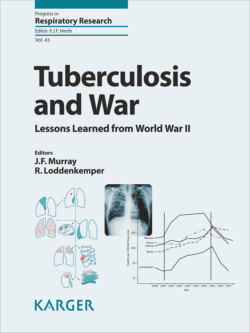Читать книгу Tuberculosis and War - Группа авторов - Страница 26
На сайте Литреса книга снята с продажи.
World War I
ОглавлениеConcerned Europeans knew something dreadful was going to happen and it finally did: on 28 June 1914, Archduke Franz Ferdinand, heir presumptive to the throne of Austria-Hungary, and his wife Sophie were assassinated by a Bosnian Serb terrorist. Exactly one month later, 28 July 1914, war erupted: Austria-Hungary declared war on Serbia and Russia ordered general mobilization in support of Serbia. A few days later at the beginning of August, Germany invaded neutral Luxembourg and then Belgium on its way to attack France; the next day Great Britain declared war against Germany. At the war’s end, 32 countries were fighting [79].
The initial invasion by the German Army came perilously close to Paris, but the French successfully pushed back. Then, a 3-year trench-warfare stalemate occurred that resulted in relatively small back and forth shifts of occupied territory, but the repeated attacks and counter-attacks led to enormous casualties on both sides: in the early 1916 Battle of Verdun, for example, there were 700,000–975,000 dead and wounded; later the same year, there were more than one million casualties in the Battle of Somme, one of the highest numbers in a single battle ever. The Germans defeated the Russians in 1917, but after a final push by the Germans in 1918, the Central Powers were exhausted and an armistice with Germany was declared on 11 November 1918 [79].
Note that around 1780, and at greatly varying years afterwards, death rates from TB started to decline and they continued declining for well over 100 years. But then suddenly, as illustrated during the 50-year period from 1885 to 1935 (Fig. 5), 5- to 7-year-long never-before observed spikes of TB mortality rose sharply in several countries, beginning on or just before the day WWI was declared in 1914 [80]; equally remarkable was the subsequent brisk drop in mortality after hostilities and the end of the overlapping influenza pandemic were over in about 1921. After both the wartime increase and its accompanying decrease had concluded, the previous downward slope of TB mortality resumed its decline as though the war had never happened, as strikingly illustrated in Figure 5. (See also Fig. 10 in chapter 2.) These remarkable events during WWI prove without doubt the incontrovertible linkage between TB and war.
